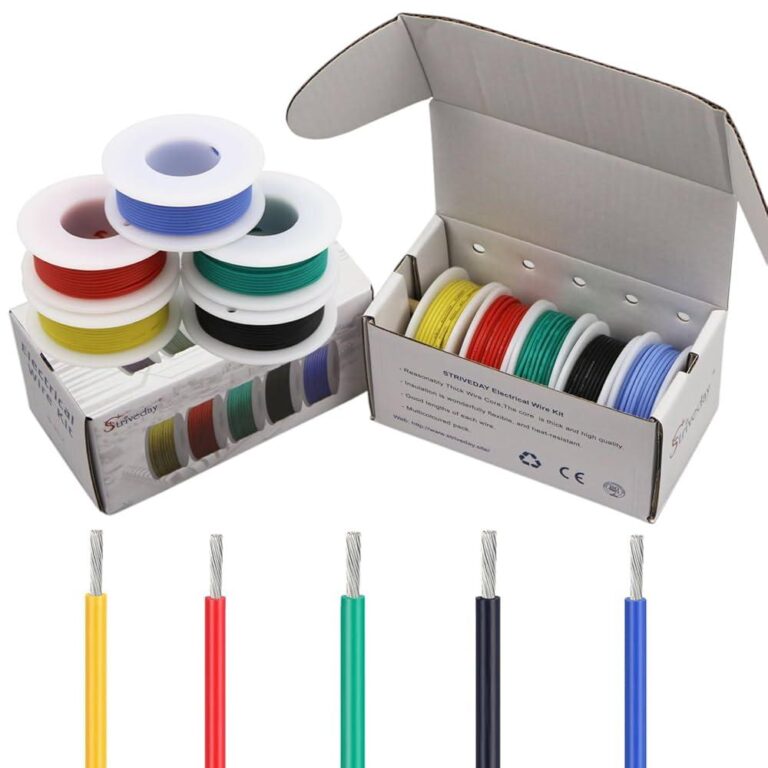The United Kingdom’s stranded wire market is poised for steady expansion over the next decade, with projections indicating a compound annual growth rate (CAGR) of 2.4% from 2024 to 2035. According to a recent report by IndexBox, the market is expected to reach a valuation of $777 million by 2035, driven by rising demand across key industrial sectors. This growth underscores the evolving dynamics of the UK’s manufacturing and construction industries, where stranded wire continues to play a critical role.
UK’s Stranded Wire Market Set for Steady Growth Driven by Industrial Demand
The UK’s stranded wire market is poised for consistent expansion, driven primarily by burgeoning industrial applications across sectors such as automotive manufacturing, construction, and electrical infrastructure. The rise in automation and electrification in these industries underscores the increasing reliance on durable and flexible wiring solutions. Additionally, government initiatives geared towards upgrading aging infrastructure further bolster demand, making stranded wires a critical component in ensuring operational efficiency and safety.
Key factors fueling growth include:
- Surging investments in renewable energy projects requiring reliable wiring systems
- Expansion of electric vehicle (EV) production facilities emphasizing lightweight and high-conductivity cables
- Growth in construction activities focusing on smart buildings equipped with advanced electrical frameworks
| Year | Market Value (USD Million) | Annual Growth Rate (%) |
|---|---|---|
| 2024 | 580 | 2.2% |
| 2029 | 655 | 2.5% |
| 2035 | 777 | 2.4% |
Analysis of Key Market Drivers and Emerging Opportunities in the UK Stranded Wire Sector
The UK’s stranded wire market is being propelled by several dynamic factors fueling its steady growth trajectory. Infrastructure modernization, driven by government investments in transportation and energy sectors, remains a pivotal driver. Increasing demand for reliable electrical wiring solutions in automotive manufacturing and renewable energy projects further bolsters market potential. Additionally, the rising prevalence of smart grid technologies and urban electrification initiatives is creating fresh avenues for stranded wire applications, as these projects require enhanced flexibility and conductivity. Coupled with stringent regulations around safety and durability, manufacturers are innovating to meet evolving industry standards, paving the way for robust expansion.
Emerging opportunities in the sector are notably centered around technological advancements and sustainable practices. The growing adoption of eco-friendly raw materials and energy-efficient production processes is attracting environmentally conscious buyers. Key growth segments include stranded wires used in electric vehicles (EVs), battery storage systems, and advanced telecommunications infrastructure. Below is a snapshot of potential application areas promising high returns:
| Application Area | Projected CAGR (2024-2035) | Market Impact |
|---|---|---|
| Electric Vehicles (EVs) | 3.5% | High demand for lightweight, flexible conductors |
| Renewable Energy | 2.8% | Integration into wind and solar power systems |
| Telecommunications | 2.2% | Support for expanding 5G and fiber networks |
| Construction & Infrastructure | 1.9% | Upgrades to urban electrical grids |
Strategic Recommendations for Manufacturers to Capitalize on Market Expansion Through 2035
Manufacturers looking to harness the projected growth in the UK’s stranded wire market must prioritize innovation in product design and supply chain agility. Emphasizing eco-friendly materials and energy-efficient production techniques will not only align with evolving regulatory standards but also cater to the increasing demand for sustainable solutions across the construction and automotive sectors. Additionally, investing in advanced testing and quality assurance processes will underpin reliability, a key factor for buyers focusing on long-term performance rather than short-term cost savings.
Strategic partnerships and targeted market penetration can further expedite growth. Collaborations with local distributors, infrastructure developers, and technology providers offer multiple channels for boosting market presence. Below is a concise strategy matrix outlining critical focus areas for manufacturers:
| Focus Area | Key Actions | Expected Impact |
|---|---|---|
| R&D Investment | Develop eco-friendly wires, enhance durability | Improved product appeal, compliance advantages |
| Supply Chain Optimization | Implement real-time tracking, diversify suppliers | Reduced delays, cost efficiency |
| Partnerships & Alliances | Collaborate with regional distributors and tech firms | Expanded reach, innovation access |
| Market Segmentation | Target construction and automotive sectors separately | Customized marketing, higher conversion rates |
Key Takeaways
As the UK’s stranded wire market is projected to grow at a steady compound annual growth rate of 2.4% between 2024 and 2035, reaching an estimated value of $777 million by the end of the period, industry stakeholders are closely monitoring the evolving demand dynamics. Factors such as expanding construction activities, increased infrastructure investments, and technological advancements are expected to drive this upward trend. With these developments, the stranded wire sector is poised to play a pivotal role in supporting the UK’s broader industrial growth in the years ahead.




